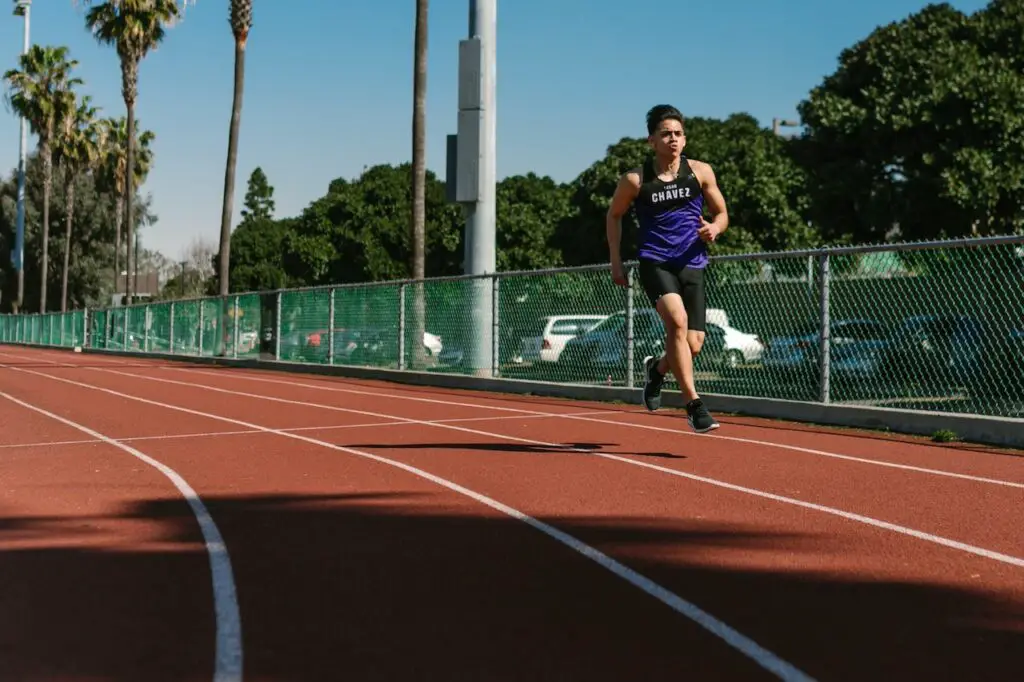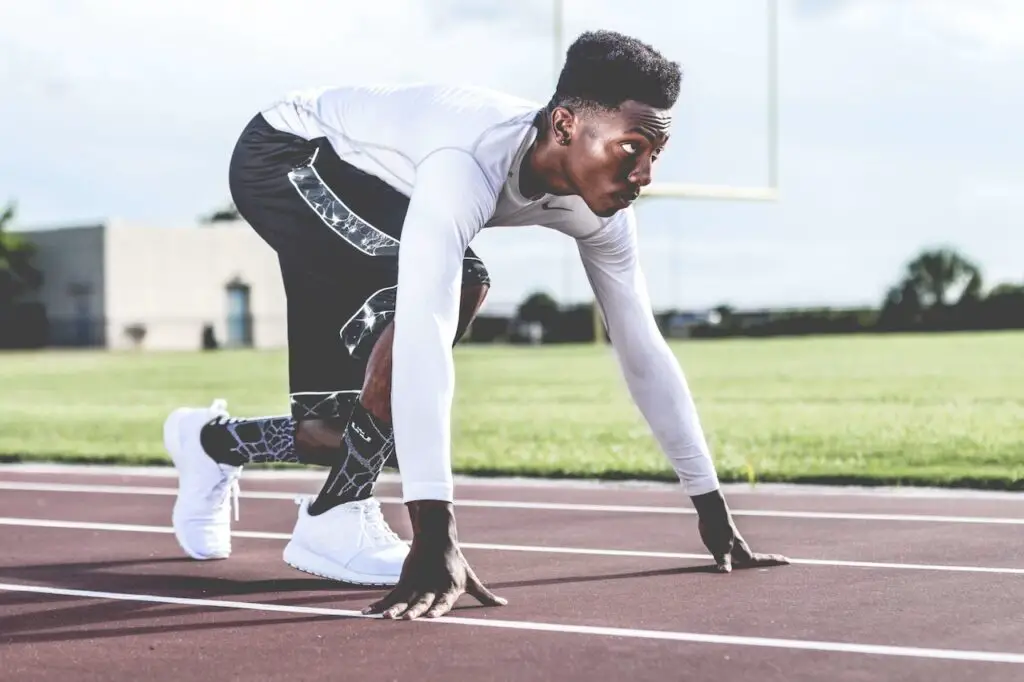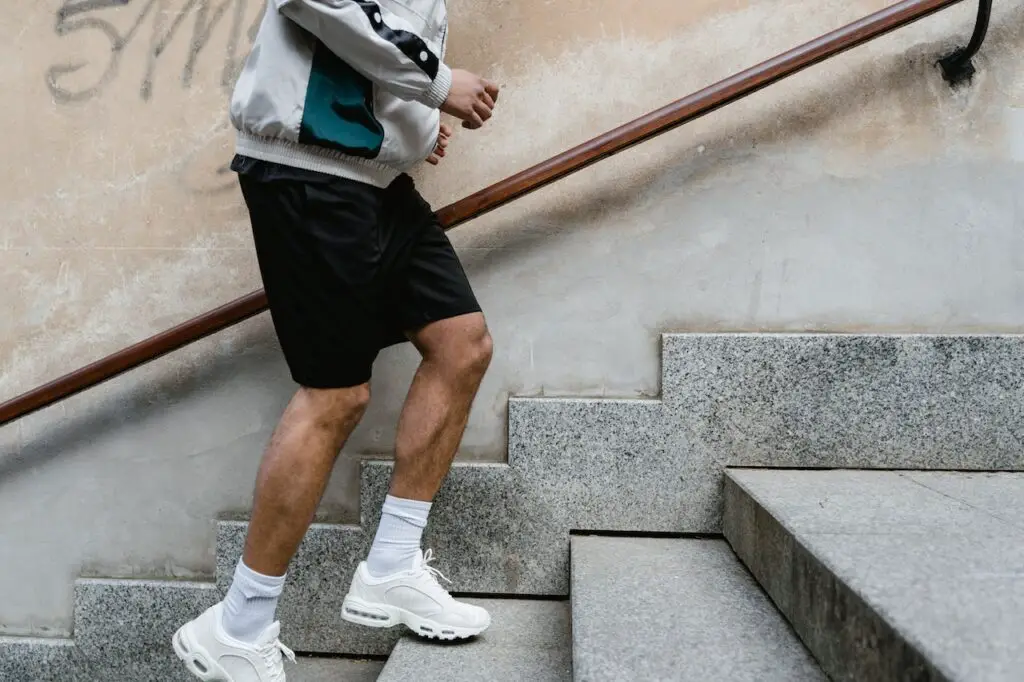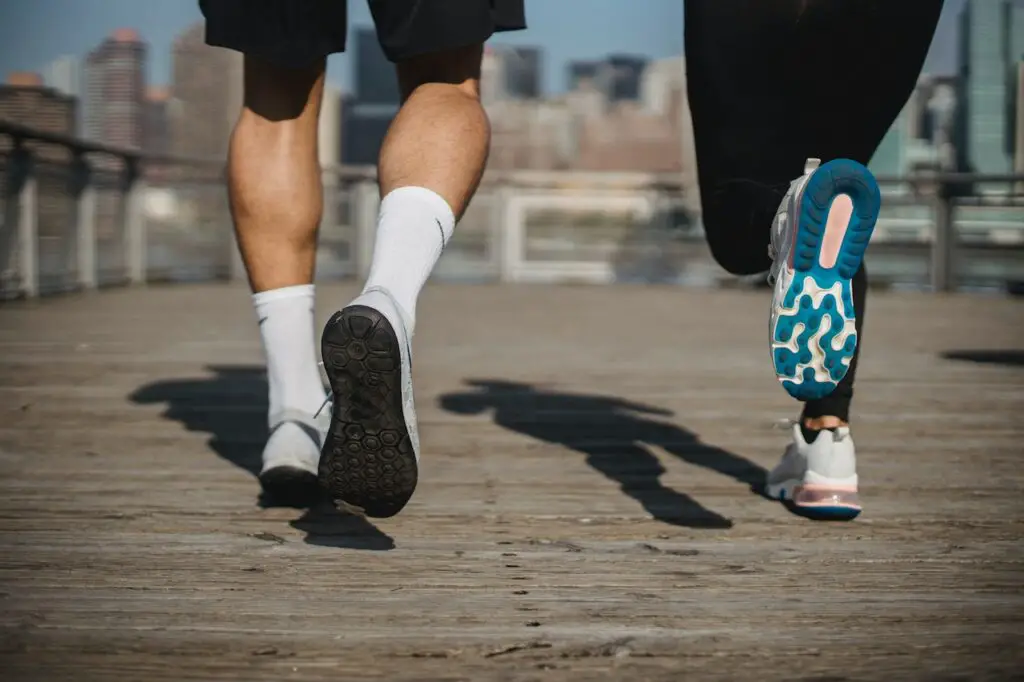Are you a man who loves running? Whether you’re a seasoned marathon runner or just starting your jogging routine, having the right pair of running shoes can make a world of difference in your performance. In this article, we will explore the best running shoes that every man needs to boost their performance and take their running game to new heights. So, let’s lace up our shoes and dive into the world of running footwear!
Running is not only a great way to stay fit and healthy but also a popular sport among men. To excel in running, it’s crucial to invest in the right pair of running shoes that offer comfort, support, and performance-enhancing features. In the following sections, we will delve into the key factors to consider when purchasing running shoes and explore the top brands and models available in the market.
Importance of Choosing the Right Running Shoes
Choosing the right running shoes is of utmost importance for several reasons. Firstly, wearing the appropriate shoes can significantly reduce the risk of injuries during your running sessions. The right shoes provide cushioning and support to absorb the impact of each step, minimizing stress on your joints and muscles. This is particularly crucial for high-impact activities like running, where improper footwear can lead to discomfort, pain, and even long-term foot problems.
Secondly, the right running shoes can enhance your running performance. They are designed to optimize your stride, providing stability, and promoting a more efficient running gait. With the right amount of cushioning and support, you’ll experience improved comfort and a smoother running experience. This can translate into better speed, endurance, and overall performance.
Moreover, running shoes that fit properly and offer adequate support can help prevent overpronation or under pronation. Overpronation occurs when the foot excessively rolls inward, while under pronation happens when the foot doesn’t roll enough. Both conditions can lead to biomechanical imbalances and increase the risk of injuries. The right shoes can address these issues by providing stability and correcting the foot’s alignment, thus reducing the likelihood of overuse injuries and discomfort.
Related: 12 of The BEST-LOOKING Sneakers You Need To Buy in 2023.

Factors to Consider When Buying Running Shoes
When selecting running shoes, several factors should be taken into account to ensure you make the best choice for your needs. Here are some essential factors to consider:
Comfort and Fit
Comfort and fit are essential aspects to consider when selecting running shoes. The comfort of your shoes directly impacts your overall running experience. Well-fitting shoes should provide a snug yet comfortable feel, with ample room for your toes to move freely.
The upper material should be breathable and flexible, ensuring proper airflow and reducing the chances of irritation or blisters. A comfortable fit allows you to focus on your run without distractions or discomfort, ultimately enhancing your performance and enjoyment.
Cushioning and Support
Cushioning and support are critical factors to consider when choosing running shoes. Cushioning refers to the ability of the shoes to absorb the impact generated with each stride. Good cushioning helps reduce the stress on your joints, such as your knees and ankles, minimizing the risk of injuries and providing a more comfortable running experience.
Support, on the other hand, involves the shoe’s ability to provide stability and control. It helps prevent excessive pronation (inward rolling) of the foot, which can lead to imbalances and potential injuries. Adequate support in the arch and heel areas promotes proper alignment and a more natural gait cycle.
Stability and Pronation Control
Stability and pronation control are vital considerations when selecting running shoes. Stability features are designed to provide additional support to the foot and ankle, particularly for runners who have a tendency to overpronate or have low arches. Overpronation occurs when the foot rolls inward excessively during the running stride, which can lead to imbalances and increased risk of injuries.
Running shoes with pronation control features, such as firmer midsole materials or supportive structures, help correct the foot’s inward rolling motion and promote a more neutral alignment. This helps distribute the forces evenly, reducing stress on the joints and preventing potential issues like shin splints or plantar fasciitis.
Durability and Longevity
Durability and longevity are essential factors to consider when selecting running shoes. Running involves repetitive impact and friction, which can cause wear and tear on your shoes over time. Choosing durable running shoes made with high-quality materials ensures they can withstand the demands of your running routine.
High-quality running shoes are designed to last longer, providing extended use and value for your investment. They feature sturdy construction and reinforced areas, such as the outsole and upper, to withstand the rigors of regular running. Durable shoes maintain their structural integrity, cushioning, and support, even after miles of running.
Traction and Grip
Traction and grip are crucial considerations when it comes to selecting running shoes. The outsole of the shoes plays a significant role in providing traction and grip on various surfaces. Whether you’re running on pavement, trails, or wet conditions, having a shoe with excellent traction ensures stability and helps prevent slips and falls.
Running shoes with a well-designed outsole feature patterns or grooves that provide enhanced grip on different terrains. The materials used in the outsole, such as rubber compounds, are chosen for their durability and ability to grip the ground effectively. This allows you to maintain control and confidence in your foot placement, even in challenging conditions.
Related: Beyond the Gym: Unconventional Fitness Trends for Men

Top Running Shoe Brands for Men
When it comes to running shoes, there are several reputable brands that consistently deliver high-quality products. Here are some of the top running shoe brands for men:
Nike
Nike is known for its innovative designs and cutting-edge technology. They offer a wide range of running shoes that cater to different running styles and preferences.
Adidas
Adidas is a popular choice among runners due to its combination of style and performance. Their running shoes are known for their comfort, responsiveness, and durability.
Brooks
Brooks specializes in running shoes and has a strong reputation for their exceptional cushioning and support. They offer a variety of shoes suitable for different types of runners.
New Balance
New Balance is known for its focus on comfort and fit. Their running shoes are often praised for their wide range of sizes and widths, catering to individuals with different foot shapes.
ASICS
ASICS is a brand that focuses on performance and functionality. Their running shoes are engineered with advanced features to enhance stability, comfort, and durability.
Related: The Most Comfortable Men’s Dress Shoes for Every Occasion

Best Running Shoes for Different Types of Runners
Every runner has unique needs and preferences. Here are some recommendations for the best running shoes based on different types of runners:
Neutral Running Shoes
Neutral running shoes are designed for runners who have a neutral pronation pattern, meaning their foot rolls inward slightly upon impact and then naturally rolls outward. These shoes are built with a balanced combination of cushioning and flexibility. They provide a comfortable and supportive platform without excessive stability features or pronation control.
Neutral running shoes are versatile and suitable for a wide range of runners, including those with normal arches. They offer a smooth and natural stride, allowing the foot to move in its most natural motion. These shoes provide cushioning to absorb impact and distribute forces evenly, promoting a more efficient and comfortable running experience. Whether you’re a beginner or an experienced runner, neutral running shoes can provide the right balance of support and responsiveness for your runs.
Stability Running Shoes
Stability running shoes are specifically designed for runners who overpronate, which means their feet roll excessively inward during the running stride. These shoes offer additional support and features to help correct the foot’s pronation and promote a more neutral alignment.
Stability running shoes typically feature a denser and firmer midsole foam on the inner side to limit the foot’s inward rolling motion. This medial support helps provide stability and prevent the arch from collapsing. The shoes also have a supportive upper and reinforced structures to enhance overall stability.
Motion Control Running Shoes
Motion control running shoes are specifically designed for runners who have severe overpronation or flat feet. These shoes offer maximum stability and control to address the excessive inward rolling of the foot during the running gait.
These shoes incorporate features such as a firm and supportive midsole, a reinforced medial post, and a sturdy heel counter. These elements work together to limit pronation and provide exceptional arch support. The shoes are typically heavier and have a more rigid construction compared to other types of running shoes.
Lightweight Running Shoes
Lightweight running shoes are designed for runners who prioritize speed and agility. These shoes are characterized by their minimalistic design and reduced weight, allowing for a more natural and responsive running experience.
They typically feature a thinner and lighter midsole, offering a lower profile and enhanced ground feel. The upper is made of lightweight and breathable materials, reducing excess weight without compromising durability or support. These shoes often have a more flexible construction to promote a faster and more efficient stride.
Trail Running Shoes
Trail running shoes are specifically designed to handle the challenges of off-road running on uneven, rugged, and unpredictable terrains. These shoes offer the necessary protection, traction, and stability to navigate trails with confidence.
Trail running shoes feature a rugged outsole with aggressive lugs or multidirectional patterns that provide superior grip on various surfaces, such as dirt, mud, rocks, and gravel. The outsole is often made of durable rubber compounds that offer excellent durability and traction. Additionally, these shoes have a reinforced toe cap and protective overlays to shield the feet from obstacles and hazards encountered on the trails.
Related: 10 Stylish Tuxedo Shoes That Will Take Your Formal Attire to the Next Level!

How to Choose the Right Running Shoes for You
Choosing the right running shoes requires careful consideration of your individual needs and preferences. Here are some steps to help you find the perfect pair:
Know Your Foot Type
Understanding your foot type is crucial in determining the right level of support and cushioning you need. You can consult with a podiatrist or visit a specialty running store for a professional foot analysis.
Consider Your Running Style
Take into account your running style, whether you have a neutral gait or overpronate. This information will guide you in choosing shoes that offer the appropriate level of support and stability.
Get Properly Fitted
Visit a reputable running shoe store and have your feet measured by a knowledgeable salesperson. They can provide valuable guidance on the right shoe size and help you find options that suit your foot shape.
Test the Shoes
Before making a final purchase, take the shoes for a test run. Many specialty running stores have treadmills or allow customers to run briefly outside the store to assess comfort and fit.
Related: How to Stay Active When You Have a Desk Job
Proper Care and Maintenance of Running Shoes
To prolong the lifespan of your running shoes and maintain their performance, it’s important to take proper care of them. Here are some tips for their care and maintenance:
Cleaning and Washing
Regularly clean your running shoes to remove dirt, sweat, and odor. Use a mild detergent and a soft brush to gently scrub the upper and outsole. Avoid using harsh chemicals or throwing them in the washing machine, as this can damage the materials.
Rotating Your Shoes
Rotate between at least two pairs of running shoes. This allows each pair to fully dry out between runs and helps prevent excessive wear and tear. Alternating shoes also gives your feet a chance to adapt to different levels of cushioning and support.
Replacing Worn-Out Shoes
Keep an eye on the condition of your running shoes. As a general rule, it’s recommended to replace them every 300-500 miles or when you notice signs of significant wear and tear, such as flattened cushioning or worn-out treads. Continuing to run in worn-out shoes can increase the risk of injuries.
Conclusion
Choosing the right running shoes is crucial for every man who wants to boost their running performance. By considering factors such as comfort, fit, cushioning, support, and durability, you can find the perfect pair that suits your individual needs. Remember to prioritize your foot type, running style, and try out different brands and models to find the best fit. With the right running shoes on your feet, you’ll be ready to conquer the roads or trails and take your running to new heights.
FAQs
Are expensive running shoes better?
While expensive running shoes often offer advanced features and technologies, the best shoe for you depends on your individual needs and preferences. Focus on finding a shoe that provides the right comfort, fit, and support for your feet, regardless of its price tag.
How often should I replace my running shoes?
It’s generally recommended to replace your running shoes every 300-500 miles or when they show signs of significant wear and tear. This ensures optimal performance and reduces the risk of injuries.
Can I use running shoes for other sports?
While running shoes are designed specifically for running, they can often be used for other low-impact activities such as walking or gym workouts. However, for sports that involve specific movements or require specialized footwear (e.g., basketball, soccer), it’s best to use sport-specific shoes.
Are there any specific shoes for trail running?
Yes, there are shoes specifically designed for trail running. Trail running shoes offer increased traction, stability, and protection to handle rugged terrains, uneven surfaces, and obstacles encountered on trails.
Can I run without running shoes?
Running barefoot or with minimalist shoes is a personal choice that some runners prefer. However, it’s essential to gradually transition into barefoot running to allow your feet and muscles to adapt to the change in running mechanics.

